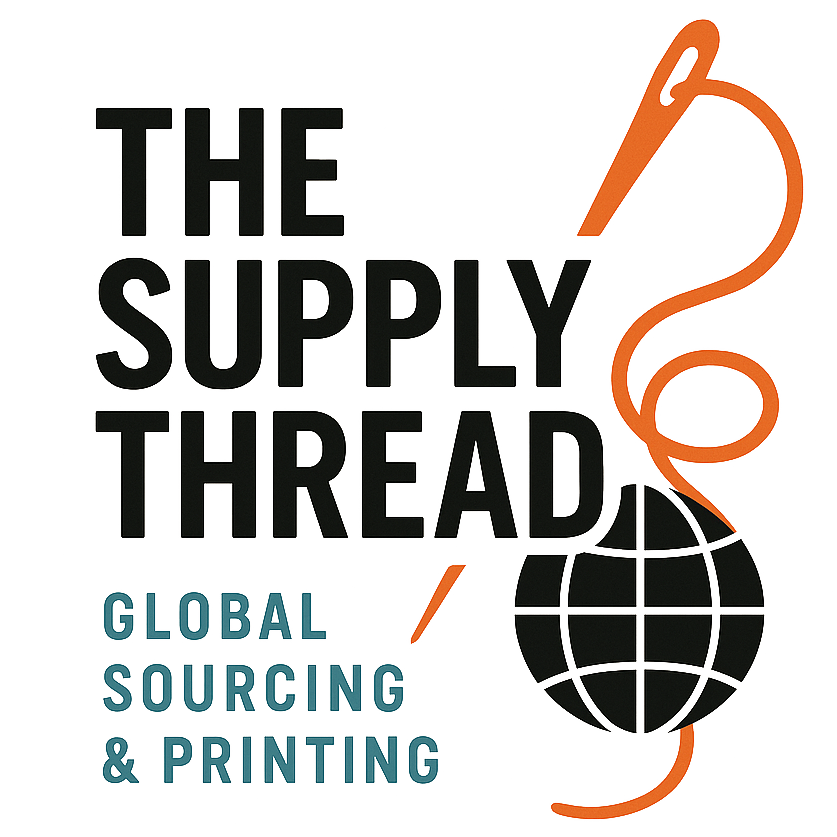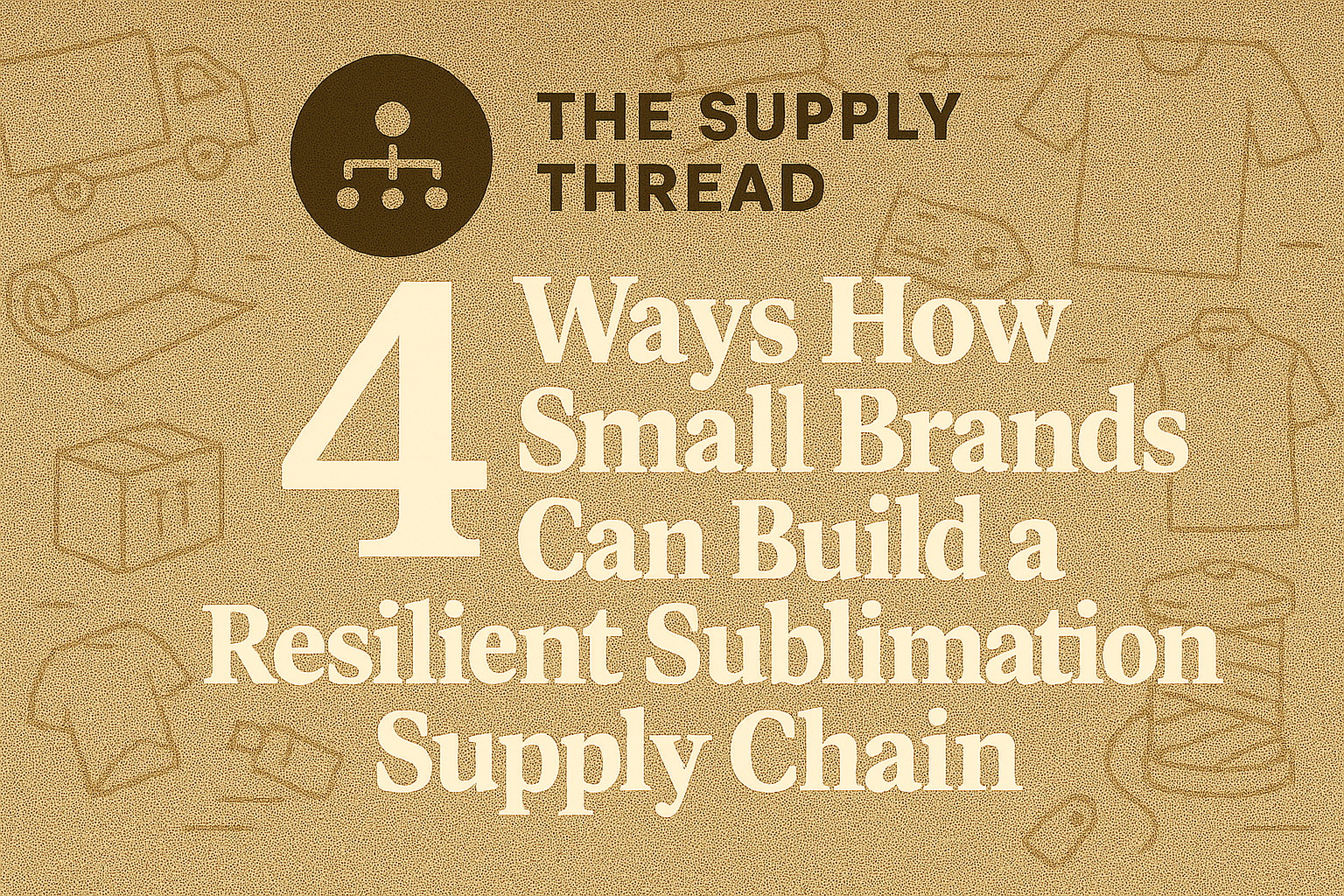Small clothing brands often face unique challenges when sourcing materials, managing production logistics, and meeting consumer expectations for quality and sustainability. This is especially true in the world of dye sublimation printing, where factors such as color accuracy, fabric quality, and fast turnaround times are crucial. In this blog post, we will explore how to build a strong sublimation supply chain that helps small businesses thrive. Whether you specialize in athletic gear, personalized gifts, or custom promotional products, a well-managed sublimation supply chain can make all the difference.
According to recent studies, the global dye sublimation printing market is projected to grow from $17.64 billion in 2025 to $28.98 billion by 2030, at a CAGR of 10.44%. (mordorintelligence.com) This growth reflects a rising demand for printed apparel, home textiles, and promotional products—segments that rely heavily on supply chain resilience. Below, we’ll discuss key concepts, share best practices, and highlight tools that empower you to build a stable and efficient sublimation supply chain.
1. Understanding the Sublimation Supply Chain
A sublimation supply chain includes every step in the process of turning raw materials into sublimated apparel or merchandise. It typically involves sourcing fabric or blank products, managing printing equipment, ensuring color accuracy, and delivering the final product to your customers. Because sublimation printing uses heat to transfer dye onto various materials, controlling quality at each stage is essential.

Dye Sublimation Printing (Key Term): This is a process where heat and pressure are applied to transfer dye onto a surface—often polyester fabrics, ceramic mugs, or coated metals. The dye converts from a solid to a gas and bonds with the fibers or coating, resulting in vibrant, long-lasting prints. For small brands, partnering with reliable suppliers who provide quality blanks and inks is necessary for maintaining consistent results.
Why Transparency Matters
Small brands must know exactly where materials come from and how they are processed. With disruptions increasingly common—ranging from shipping delays to raw material shortages—a transparent sublimation supply chain helps you detect potential problems before they hurt your business reputation. In 2023 alone, the Asia Pacific dye sublimation printing market reached $1.01 billion and is expected to grow to $1.98 billion by 2033, underscoring the importance of managing overseas logistics efficiently.
Supply Chain Resilience (Key Term)
Supply chain resilience means the ability to adapt and continue business operations amidst disruptions. Every small brand should plan for unexpected events like shipping delays or equipment breakdowns. This preparedness allows businesses to respond quickly, maintain production timelines, and keep customers satisfied—even under challenging conditions.
2. Why a Resilient Sublimation Supply Chain Matters for Small Brands
Surviving and thriving in a competitive market requires more than just great designs. You also need to master the art of logistics and build a strong network of reliable partners. By focusing on the resilience of your sublimation supply chain, you’re setting your brand up to handle growth without sacrificing quality.
Growth and Market Potential
The global personalized gift market was valued at $34 billion in 2023, with nearly 25% of its product range attributed to dye sublimation-printed items. Meanwhile, in North America, the dye sublimation printing market is expected to grow from $1.75 billion to $3.44 billion by 2033. (consainsights.com) These figures show a huge opportunity for small apparel brands to capitalize on increased consumer interest in personalized merchandise (Key Term). Yet capturing this market means ensuring your products can reach customers on time with consistent quality.
Risk of Disruptions
Overseas manufacturing often offers cost benefits, but that comes with shipping complexities. Numerous factors—from customs regulations to political changes—can delay production or cause additional fees. The global blockchain supply chain market is estimated to grow significantly, up to $3,314.6 million by 2023, suggesting that more small brands will look for high-tech methods to improve their supply chain transparency. (arxiv.org) This investment can minimize disruptions, allowing small businesses to remain competitive despite global unpredictability.

3. Practical Steps to Strengthen Your Sublimation Supply Chain
Building a sturdy sublimation supply chain doesn’t have to be overwhelming. By taking deliberate action in supplier vetting, logistics planning, and quality control, small brands can position themselves for long-term success.
1. Vet and Diversify Your Suppliers
- Always conduct a thorough review of potential suppliers. This includes checking their reputation, verifying on-time delivery history, and ensuring they follow ethical labor practices.
- Consider working with more than one supplier to minimize the risk of disruptions. If your main supplier is suddenly unavailable, you’ll still have an alternative source to keep production going.
Small brands sourcing overseas benefit from establishing clear timelines, shipping agreements, and open communication channels. The Asia Pacific region shows substantial growth in dye sublimation, but it’s wise not to put all your eggs in one geographic basket. Branching out to domestic or regional suppliers can provide extra flexibility when bottlenecks happen abroad.
2. Enhance Your Quality Control
- Inspect product samples before placing bulk orders.
- Use color-check software or rely on third-party quality assessment services to confirm that print colors match your brand’s specifications.
- Set clear performance criteria for fabric, ink, and final garment testing.
Eco-Friendly Inks (Key Term) are another consideration, as more consumers want sustainable products. Companies such as Seiko Epson Corporation, Mimaki Engineering Co. Ltd., and ColorJet Group have introduced eco-friendly dye sublimation inks. These solutions not only produce vibrant results but also reduce harmful chemicals, meeting the rising demand for responsible manufacturing.
3. Streamline Logistics
- Plan shipping schedules in advance to prevent urgent, costly deliveries.
- Evaluate warehouse needs in each region to shorten delivery times and reduce shipping fees.
In a market as large as the global sportswear segment—valued at over $180 billion in 2023, with heavy reliance on dye-sublimation printing—timely product delivery is essential to meeting customers’ expectations. (pmarketresearch.com)
4. Tools and Trends Shaping the Sublimation Supply Chain
A strong sublimation supply chain relies on more than suppliers and shipping schedules. It also involves adopting the right technologies and staying ahead of industry movements. Below are tools, trends, and organizations that can help small brands succeed.
Software and Resources
- Adobe Illustrator: This vector graphics editor is popular for designing sublimation prints, allowing for precise color and layout management.
- CorelDRAW: Another powerful graphics suite that supports complex design tasks, ensuring you have flexibility in creating unique patterns and logos.
- Wasatch SoftRIP: A specialized program for color management, designed to handle intricate print jobs and maintain color consistency across runs.
- Ergosoft RIP Software: Renowned for high-quality color output and efficient workflows, helping you manage multiple print jobs simultaneously.
- SubliMate: Tailored for dye sublimation printing, ensures accurate color reproduction, making it simpler to guarantee that finished products match your vision.
Leading Dye Sublimation Companies
Several industry leaders provide high-quality equipment and resources for small brands:
- Roland DGA Corporation develops printing machines designed for both small and large production volumes.
- Sawgrass Technologies Inc. focuses on turnkey solutions for entrepreneurs and small businesses.
- Agfa-Gevaert Group offers advanced dye sublimation equipment known for precise color management.
- Fujifilm Holdings Corporation has a broad portfolio of inks and printing technologies that adapt to a range of fabric types.
- HP Development Company LP produces printers with automated features to streamline production for brands new to dye sublimation.
Emerging Trends
- Sustainability Initiatives: Consumers care about the environmental impact of their purchases. Water-based inks and recycled polyester fabrics are in higher demand.
- Integration of Automation and Digital Technologies: Automation speeds up production, lowers error rates, and can be coupled with digital platforms for real-time order tracking.
- Rise of E-commerce Platforms: Personalized products are booming globally. The personalised gift market was valued at $34 billion in 2023, with about 25% of products integrating dye sublimation printing.
- Technological Innovations: 3D sublimation printing lets brands print on curved or irregular surfaces, opening up new merchandise possibilities.

Digital Textile Printing (Key Term)
Digital textile printing is the use of inkjet technology to print directly onto fabric. Within the sublimation supply chain, this approach allows smaller print runs, enabling brands to experiment with different products without significant upfront costs. The European market for digitally printed textiles grew by 14% in 2023, indicating consumer enthusiasm for customized designs.
Conclusion
Building a resilient sublimation supply chain takes careful planning and ongoing evaluation. For small brands aiming to stand out in the ever-growing market—fueled by consumer demand for personalized merchandise, eco-friendly options, and fast shipping—there’s no magic shortcut. You must set clear standards for sourcing, collaborate with reliable partners, invest in high-quality software and machinery, and stay informed about evolving industry trends.
Start by evaluating your current sublimation supply chain. Identify any potential weak spots, whether in supplier communication, quality checks, or shipping logistics. With a plan to address those areas, you’ll be better prepared to handle disruptions and maintain brand credibility. As the global dye sublimation printing market continues to expand—especially in Asia Pacific, where the market is expected to nearly double from $1.01 billion in 2023 to $1.98 billion by 2033—securing a robust supply chain can be your competitive advantage.
A strong sublimation supply chain can help even the smallest brands produce professional, high-quality apparel or merchandise while protecting against costly missteps. With diligence, the right tools, and an eye on sustainability, your brand can thrive. By staying prepared, flexible, and determined, you can confidently build a sublimation supply chain that meets today’s needs while setting the foundation for future success.

